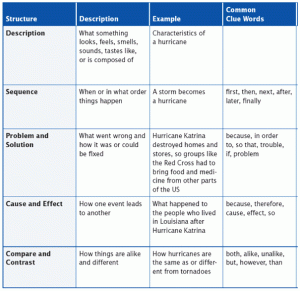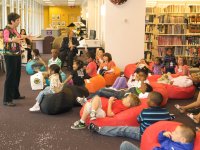Talking About Text Structure in the PBL Classroom
Enhance PBL by teaching students how to identify text structure how to and use it within their project-based reading and writing.
Your content has been saved!
Go to My Saved Content.Project-based learning is often associated with STEM learning, but PBL is a powerful context for literacy learning as well. Many research-supported practices for developing literacy can be seamlessly embedded into projects. A meaningful and engaging context, as in PBL, can make instruction in research-supported practices even more effective (Guthrie et al., 2004; Guthrie et al., 2008).
Strong readers pay more attention than weaker readers to how texts are structured or organized. Fortunately, paying more attention to text structure is something that we can teach to all readers. Research shows that this practice helps many readers, even young children and those with learning difficulties (Gersten, Fuchs, Williams, & Baker, 2001; Shanahan et al., 2010). Consider the following seven steps to teach informational text structures within a project:
1. Project-Related Texts
Select a text that one or more students are using in a project. Early on, consider using shorter texts, such as articles, that have a single, easy-to-identify structure, such as compare/contrast. In later lessons, you can move to longer texts with multiple and more complex structures.
2. Graphic Organizers
Consider using a graphic organizer, such as a Venn diagram, flow chart, hierarchical diagram, or timeline, to help students learn that structure. While many graphic organizers are available online, you can also develop organizers in most word-processing software or concept-mapping apps. With young children, it may help to make a large graphic organizer and use objects rather than texts at first. For example, you might introduce the idea by sorting classroom objects into a Venn diagram made of hula-hoops.
3. Uncovering the Structure
Begin the lesson by explaining that uncovering the structure of a text can help students understand and gather information for their projects. The more students connect this skill to success in their project, the more motivated they are likely to be as they learn and apply it.
4. Identifying the Structure
Work with students to identify the structure of the text that you selected, explicitly teaching not only about the structure, but also about how to recognize it in a text. Consider using common clue words as in the table below (adapted from Improving reading comprehension in kindergarten through 3rd grade: A practice guide).

5. From Structure to Practice
Encourage students to identify the structure of texts that they'll be reading during that day's project time. Circulate the room as they work so that you can support them in this process. Consider pulling together small groups of the students using the same or similar texts to work together on text structure identification. Many students will find it helpful to draw the structure of the text.
6. Review the Practice
Pull students back together to share the structures they found and how those structures helped them understand and find information for the project. Review key points from your initial lesson, and plan opportunities to follow up in later lessons. Encourage students to let you and their peers know when they uncover particularly interesting or accessible structures, such as information organized into an alphabet book or a question-and-answer format. Just as we create a word-conscious classroom by modeling and encouraging an interest in words, we can create a text-structure-conscious classroom by modeling and encouraging an interest in how authors organize their texts.
7. Extend Text Structure Instruction to Writing
Students are likely to understand text structure more deeply if you also draw their attention to text structure in writing. For example, you might invite students to use the same graphic organizers for project writing that they have been using in their reading.
With all that we need to accomplish not only in STEM, but in literacy development as well, we should take advantage of any opportunity to incorporate practices that research has shown to be effective, and to amplify that effectiveness through a PBL context.
